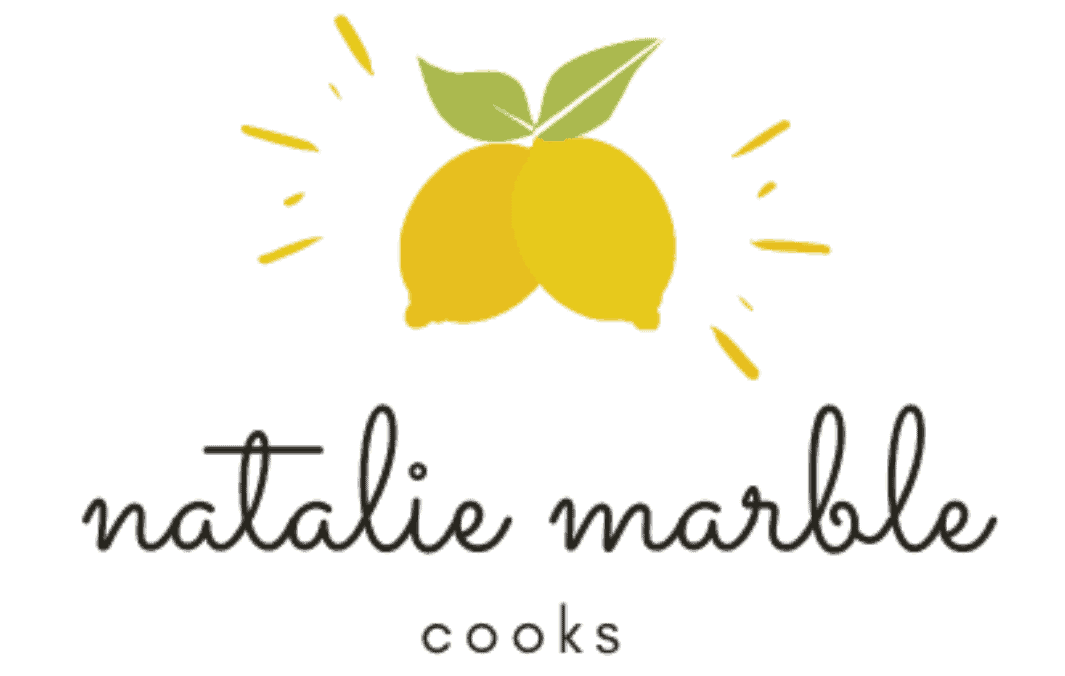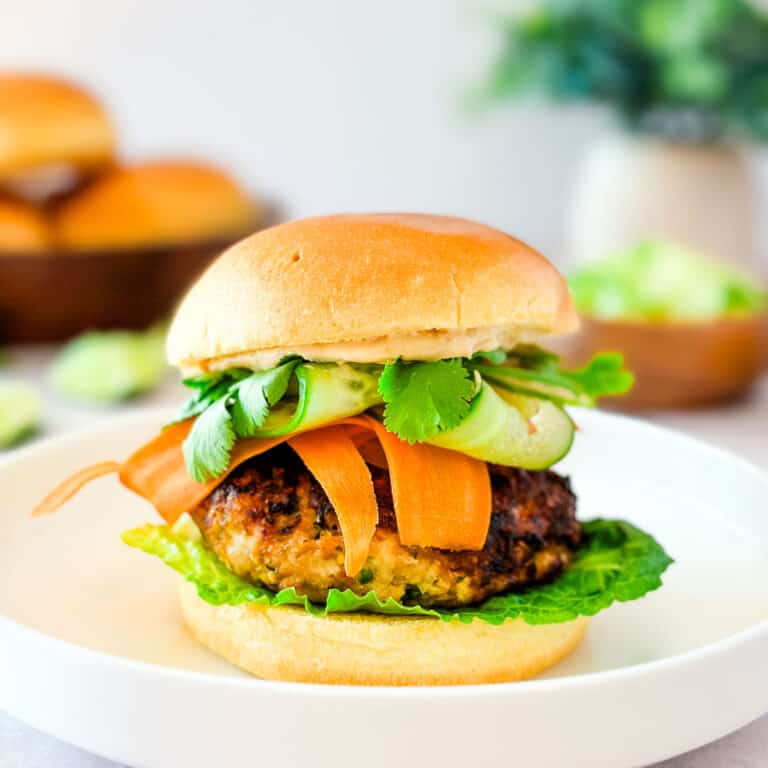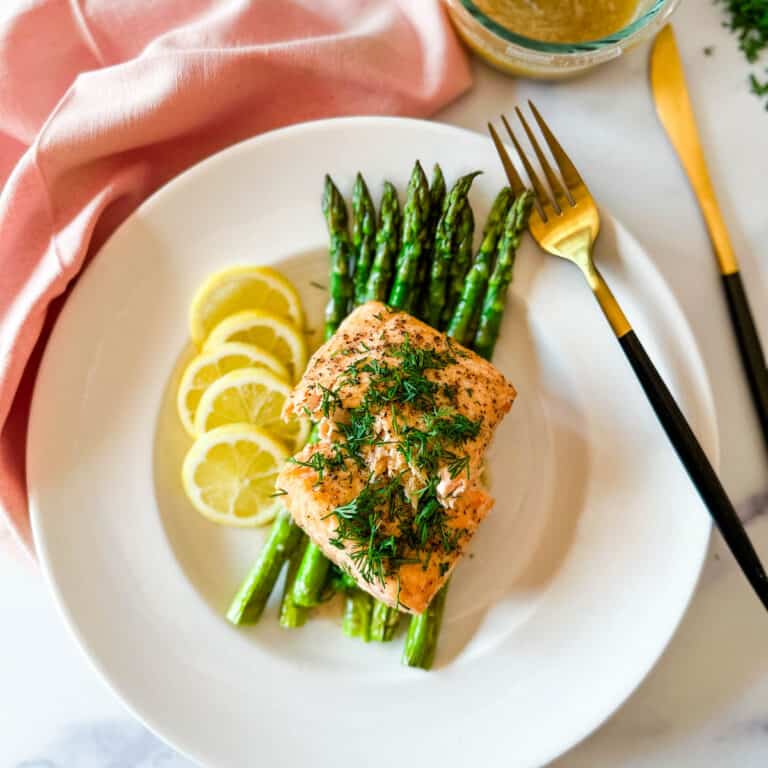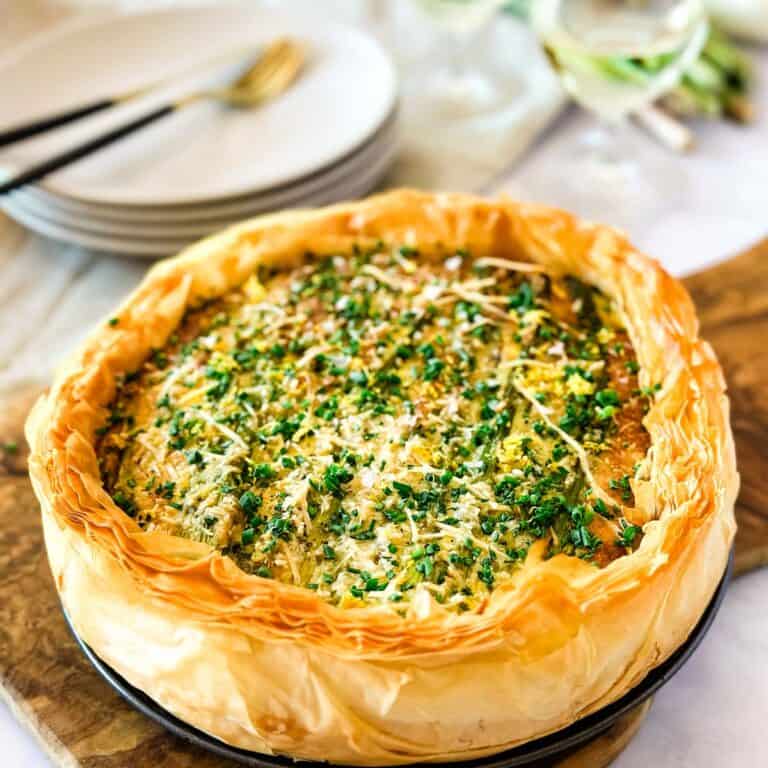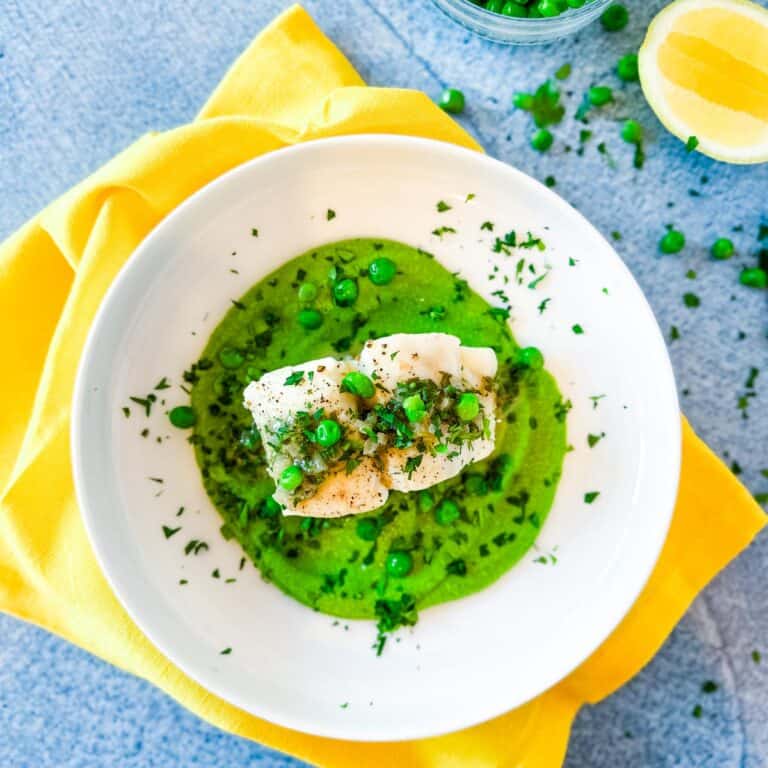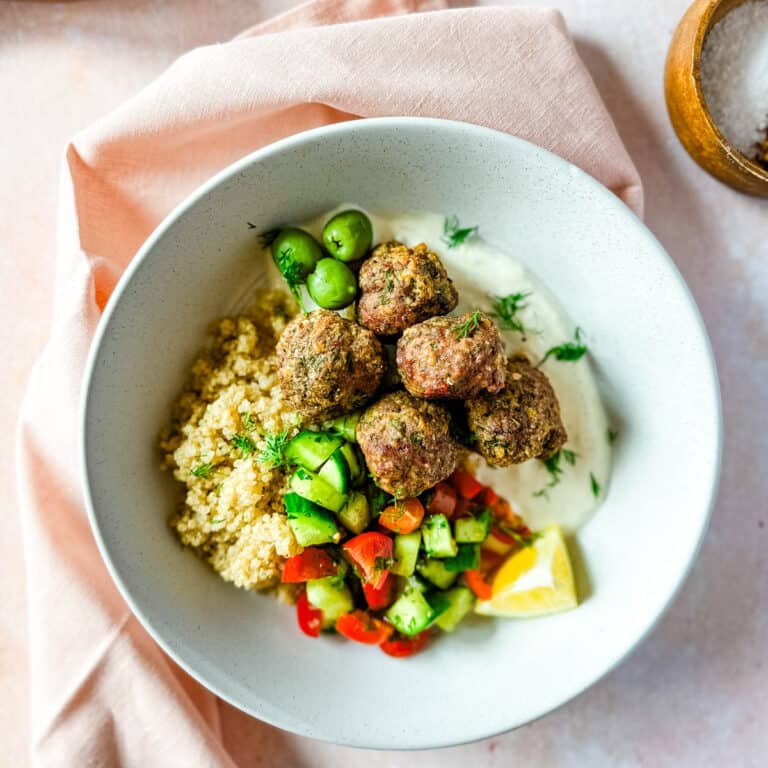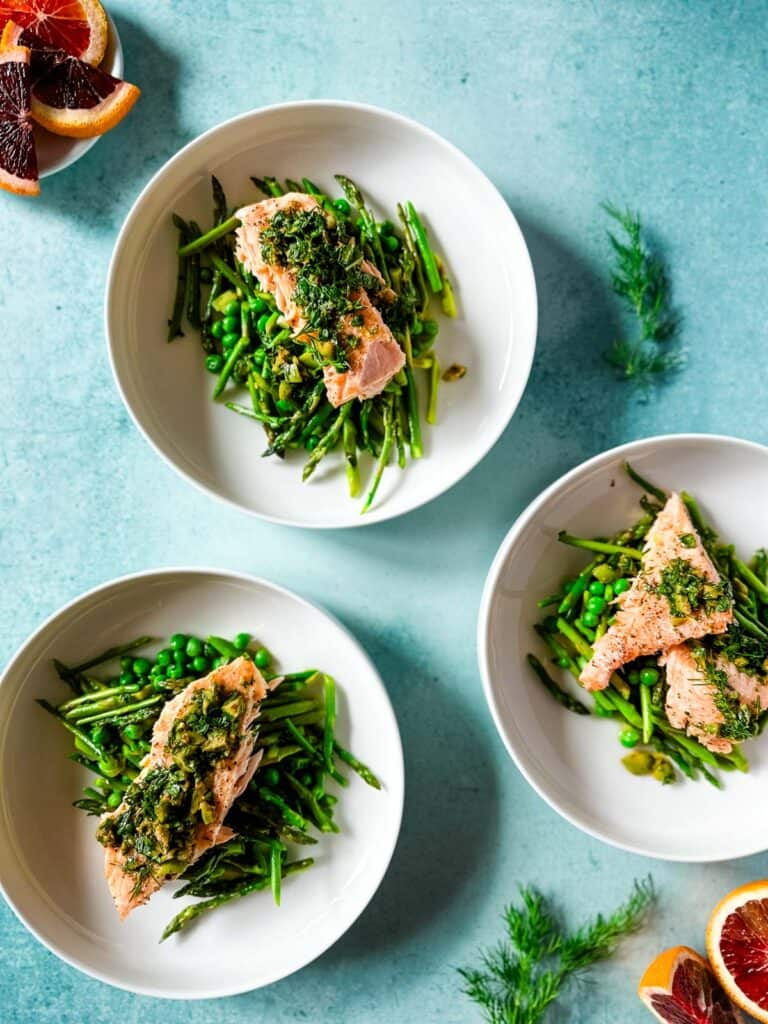Slow Roasted Salmon with Fennel and Citrus
Imagine the softest, most delicately textured and perfectly moist salmon – this is it! Slow cooking salmon highlights the very best that this fish has to offer. I just know that this Slow Roasted Salmon with Fennel and Citrus is going to become a family favorite of yours, as it has for mine, for its amazing flavor and ease of cooking and cleanup alike.

What is slow roasting exactly?
In this recipe, it’s salmon cooked in the oven on a sheet pan, in one large piece, at a very low temperature – 250 degrees to be exact.
I know your next question, why slow roast salmon?
Well, this is where the magic happens. You see, roasting something low and slow is one of the most delicate and simple forms of cooking. It results in the most tender texture, the most evenly cooked fish, and it’s virtually impossible to overcook.
You might be thinking that if the temperature is low, then the cooking time is longer. And you’d be right. However, this is not a bad thing. Because the prep is so minimal and the actual cooking is so hands-off, you have plenty of time to pull together a quick sauce and salad to serve with it. This is the magic of stress-free weeknight cooking!
I, personally, love cooking salmon this way. One humble piece of fish seasoned with nothing more that salt, pepper and olive oil, can be served with so many different sauces and sides. It is a blank canvas for sure!
If you’re looking for some other ways to enjoy salmon, check out this Quick Air Fryer Salmon and Asparagus with Lemon Brown Butter or Sheet Pan Salmon with Brussels Sprouts and Pancetta.
What you’ll love about this recipe:
Recipe ingredients
These are the ingredients you’ll need to make this incredible roasted salmon recipe:

Ingredient Notes
The ingredients to make this slow roasted salmon are easy to find and readily available at most any grocery store.
Here are a few ingredient notes:
Salmon: You can use a center cut salmon filet or an entire side of salmon — both work equally well. Just be sure the keep the salmon in one piece – this is a large part of what leads to that silky texture inside. For this slow oven roasted salmon recipe I chose an Atlantic farmed salmon for its higher fat content. The higher fat content provides for a more moist and juicy end result.
Fennel: If you are not familiar with fennel, don’t be intimidated (detailed instructions below on how to handle it)! Easily found at any grocery store, it is a bulbous vegetable, most closely related to the carrot, that has an almost sweet anise or licorice flavor, depending on how you use it. In this recipe, we are thinly slicing or shaving the bulb and picking the feathery fronds at the top.
Citrus: I have used a mix of citrus here – oranges, blood oranges, and grapefruit. You are welcome to use whatever you like – a single variety or a combination. Either will be equally delicious!

How to make Slow Roasted Salmon with Fennel and Citrus: STEP BY STEP
Be sure to check out the full recipe and ingredient list in the recipe card below
Steps 1 & 2:
Begin by seasoning the salmon filet with the brown sugar, salt and pepper. Roast at 250 degrees for about 25 minutes.
Next, segment the citrus, by removing the top and bottom and then removing the skin and pith in a rounded motion from top to bottom. *Please see the detailed video tutorial below.


Steps 3 & 4:
Continue to remove the skin and pith around the entire orange.
Then, cut in a V shape in between each membrane to remove the segments.


Steps 5 & 6:
Once you have segmented all of the citrus, squeeze the carcasses (what’s left) over a bowl to capture the juices for the vinaigrette.
Next, remove the tops and very bottom of the fennel and remove the outermost leaf if it is looking rough at all. Pick the feathery fronds from the top portion and set them aside.


Steps 7 & 8:
Slice the fennel bulb in half lengthwise and remove the core.
Then, thinly slice the fennel bulb halves crosswise.


Steps 9 & 10:
Remove the salmon from the oven when the innermost temperature reaches 145 degrees. If you don’t have a thermometer, you’re looking for it to flake when you gently press it.
Add the fennel, citrus, fennel fronds, salt, pepper and olive oil to a bowl and gently toss until well combined.



Chef Notes & Tips
- Be sure to leave the salmon in one piece. Slow roasting results are best when when not divided up into filets, as the whole piece retains its natural moisture.
- The best way to know when the salmon is done, is to flake it gently with a fork or you can press it with your finger. It’s important to note that the salmon will not look very different when its finished – it may still look a little translucent in the center, but this is just because the temperature was so low, and it is indeed cooked. You can also check the temperature with a thermometer in the thickest part of the filet – it should register 125 degrees Fahrenheit for medium doneness.
- Slice the fennel thin for best texture to compliment the salmon. You can use a chef’s knife or a mandolin.
- When you’re segmenting the citrus, be sure to work over a bowl to catch all of the juices for your vinaigrette.
How to Segment Citrus: A Video Tutorial
This is a quick video to show you, in detail, how to properly segment any kind of citrus. I hope you find it helpful!

Note: For the best success segmenting citrus, use a BONING KNIFE! The flexible blade makes it easier to cut in a rounded motion when working from the top of the orange to the bottom. This is a great article explaining the uses and merits of boning knives as well as an in-depth review of several knives.
Storage & Reheating
STORAGE: Store any leftover salmon separate from the fennel citrus salad. They can both go into airtight containers and be refrigerated for up to 3 days.
REHEATING: To reheat the salmon, add it to a baking dish with a splash of water and cover it with aluminum foil. Add to a 350 degree oven until warmed through. Alternatively, you can also reheat it in the microwave in 30 second intervals until warmed through.
FREEZING: You can freeze the salmon in an airtight container for up to 3 months. The fennel and citrus is not suitable for freezing.

Additions & Substitutions
ADDITIONS
Chili: To add some heat to the dish, you could add some chili in a couple of different ways. To the rub for the salmon, add some chili flake, cayenne, or chili powder. To the fennel salad, add sliced fresh chilis (jalapeno, fresno or serano peppers) or a pinch of red pepper flakes.
Arugula: This would add a peppery contrast to the fennel and citrus – but I would only add enough to be a supporting player.
Butter lettuce: Adding some butter lettuce would add a nice soft texture and mild flavor, so as to not compete with the fennel and citrus.
Citrus zest: Before segmenting the citrus, you could zest an orange or two, to add to the fennel citrus salad to punch up the citrus flavor. Just be mindful not to add too much, or suddenly you won’t be able to taste the fennel and the salad will be imbalanced.
Shallot: Adding a mild onion flavor and crunch to the salad would be a nice addition you could consider.
SUBSTITUTIONS
Fennel: Celery would be the closest in texture and light flavor as a substitute, while complementing the citrus. Slice or shave the celery thinly, just as you would the fennel.
Citrus: You can consider many different varieties of oranges and grapefruit for this – the type you use is really up to you. Please note that some ‘juice’ oranges will have much thinner skin and yield considerably more juice, which is more than you will need to dress the fennel. You can use this additional juice simply to drink or for use in other vinaigrettes and dishes.

FAQs
I hope you love this SLOW ROASTED SALMON WITH FENNEL AND CITRUS! If you make it, be sure to leave a rating so I know how you liked it!

Slow Roasted Salmon with Fennel and Citrus
Ingredients
- 1 lb salmon filet (one piece)
- 1/3 cup olive oil
- 1 tsp brown sugar
- 1 tsp kosher salt
- 1/2 tsp freshly ground black pepper
- 3 oranges (any variety you like)
- 1 grapefruit
- 1 fennel bulb (large or 2 smaller bulbs)
Instructions
- Preheat the oven to 250 degrees.
- Rub the salmon on both sides with 1 tablespoon of the olive oil.
- Combine the brown sugar, salt and black pepper and gently rub it onto the salmon. Roast in the oven for 25 minutes or until the fish flakes easily when you press on it. Alternatively, you can use a thermometer inserted into the thickest part of the filet – 125 degrees Fahrenheit for medium is recommended. *Please note that because you are cooking at such a low temperature, the appearance of the salmon will not be much different when it is finished.
- While the salmon is cooking, segment the citrus. Using a sharp knife, cut a thin layer off the top and bottom of the citrus until you can see the flesh. Then, standing it on one end, remove the skin and white pith by slowing cutting from top to bottom in a rounded motion. Continue to do this around the entire orange/grapefruit. Next, over a bowl so you can catch the juices for the vinaigrette, cut in the shape of a V in between each membrane to remove each segment. Put the segments in a separate bowl.
- Squeeze each leftover citrus carcass over a bowl to capture the juices.
- Prepare the fennel by cutting the tops off at the top of the bulb. Remove the feathery fronds from the tops of the fennel and set them aside. Next, slice off a clean slice from the bottom of the bulb. Cut the bulb in half lengthwise and remove the inner core from each half – it will be in the shape of a triangle and you can do this by making 2 cuts in the shape of a V. Then, lay each half, cut side down, and thinly slice crosswise. Add this sliced fennel and the reserved fronds to the citrus segments.
- In the bowl with the citrus juices, whisk in the remaining olive oil. Please note, how much olive oil you use, totally depends on how much juice you got from your citrus – so you can add and taste as you go.
- Season the fennel and citrus with a generous pinch of salt and pepper and then pour over the citrus juice and olive oil. Gently toss everything to combine well.
- To serve, add the fennel citrus salad to your plate and then flake off some salmon to add on top. ENJOY!
Nutrition
Did you make this recipe?
Mention us @nataliemarblecooks so we can see your creations! You can also leave a comment below!
